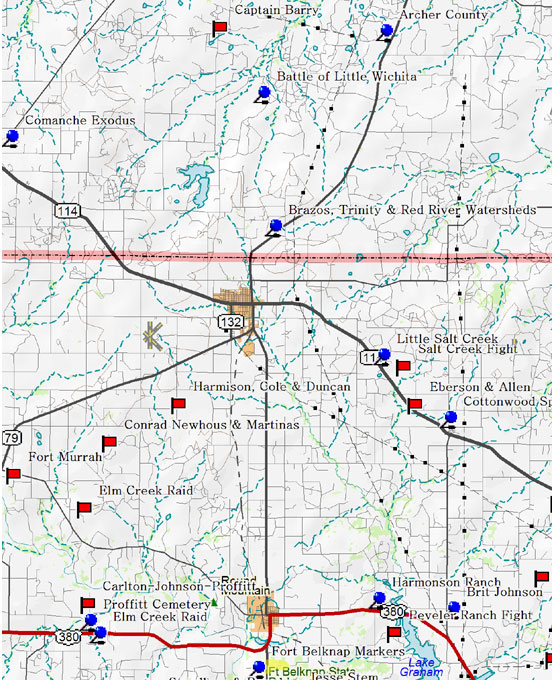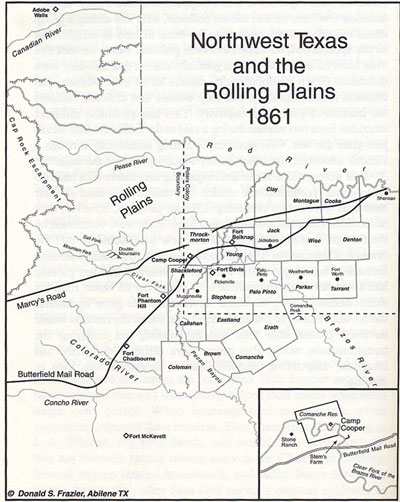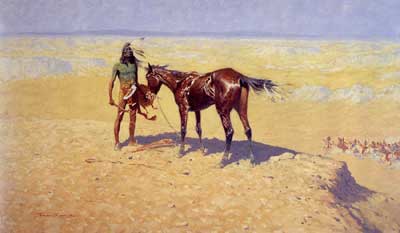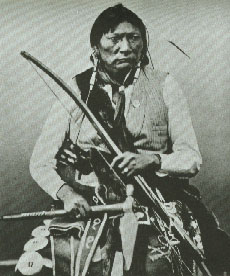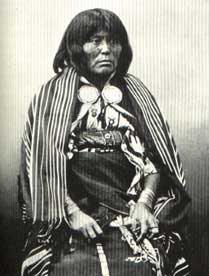|
Turn left as you leave Fort Belknap's gates, and head north to catch 380. Head west, continuing along the Texas Fort Trail and the stage route to California, next stop Fort Griffin. However, my road trip follows 380 through Newcastle to Hwy. 1769 where I turn north to Brit Johnson's marker. |
||||||||||
|
|
||||||||||
|
|
||||||||||
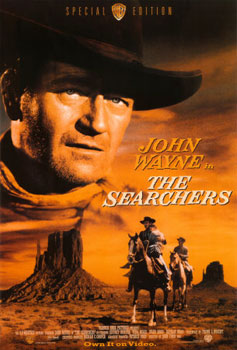 |
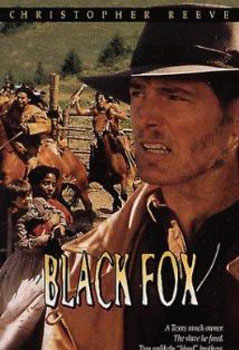 |
The Searchers |
Black Fox |
Several movies have been based on this devastating raid including John Ford's The Searchers starring John Wayne and Black Fox starring Christopher Reeve. Nearly a dozen soldiers and settlers were killed and that many more captured as well as ten thousand head of livestock, which represented a substantial portion of the area's wealth.
Battlefield Drive
A historically valuable side-trip can be made to the northwest on Hwy 926 to the site where five Confederate soldiers were killed in the shadow of old Fort Murrah at the beginning of the Elm Creek Raid.
Three miles north of Olney is a historical marker about how this area uniquely serves as a watershed for three rivers. Depending on which way a rain drop ends up running, it can find itself in the Trinity, the Red or the Brazos. Archer City has a couple of interesting markers on its courthouse lawn. One describes Jesse James' frequent visits to Archer City and another is a tribute to Fort Cureton, located southeast of town. There is a marker two miles north of Archer City on FM25 that describes how French traders once operated in the vicinity.
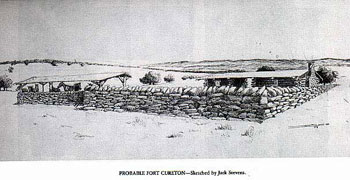 |
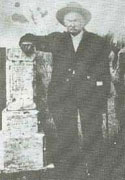 |
Fort Cureton
|
W.C. "Uncle Billy" Kutch |
The Salt Creek Fight has that wonderful scene were W.C. Kutch asks his friend, Shapp Carter what he recommends they do as they are looking down at their friends being overwhelmed by a large force of attacking Indians. Carter says in effect, "If we don't help them, what will we say later?" Kutch replies, "How about a charge?" They go firing their pistols in what must have seemed like a suicidal exhibition of bravado.
Though the fight was certainly hot and there were many wounded, only one man was killed while on the field. Shapp Carter died two days later. Eight out of the eleven were wounded, all but one, at least twice. Kutch and the other wounded men endured a grueling wagon ride to Harmison's ranch, where they were laid out on the floor of the cabin and the wounded were tended to. A man named Whitten, who had pulled out Bill Peveler's arrowheads with bullet molds a few years earlier, was instructed by Kutch to do the same for him; Kutch had already pulled out the other two by himself.
Home | Table of Contents | Forts | Road Trip Maps | Blood Trail Maps | Links | PX and Library | Contact Us | Mail Bag | Search | Intro | Upcoming Events | Reader's Road Trips Fort Tours Systems - Founded by Rick Steed |
